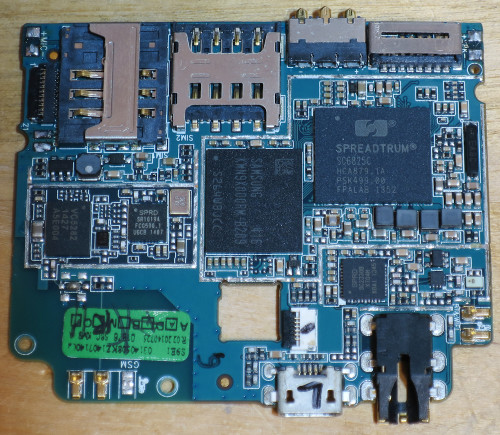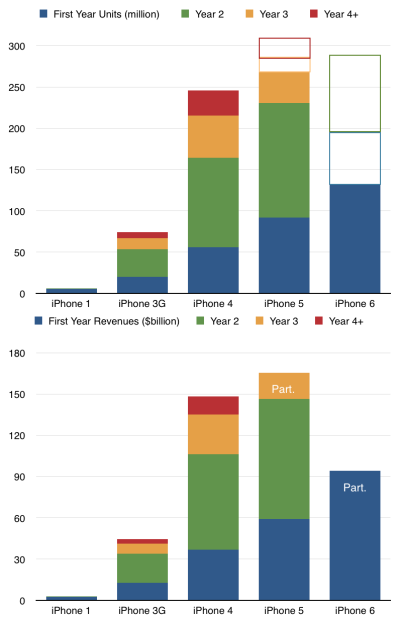Sections
Deep Learning and Technological Unemployment
[avatar user=”malm” size=”small” align=”left” link=”file” /]
It’s commonplace to encounter bold claims for new technology and how profoundly it will impact the future of humanity. It’s less common to experience the genuine sense of disquiet that comes from the realisation that what you’re seeing really is going to change everything. That feeling was very present reading Andrej Karpathy’s remarkable post on recurrent neural networks (RNNs) which are at the forefront of deep learning advances across a range of areas from computer vision to natural language recognition. They were mentioned a few weeks ago in the blog as being responsible for significant recent advances in language translation performance. RNNs combine a network of artificial neurons with feedback connections enabling them to exploit internal hidden state during training and so “learn” how to map input sequences to output sequences either with or without supervision. Unsupervised RNN learning mirrors human learning albeit massively accelerated with application to any domain involving pattern recognition which is essentially every aspect of human culture. Karpathy supplies a progression of compelling examples involving the entire works of Shakespeare, a massive Wikipedia data set and, by way of dénouement, the entire Linux source base. The resulting output from “a few days” unsupervised training on the latter is staggering:
It forces us to consider where further inevitable advances in RNN based approaches take us next. The technology S-curve provides perhaps the best map – from genesis to platformization into standard utility through progressive reuse, performance improvement and ultimately service API encapsulation:

RNNs could therefore end up being the starting point for a chain of advances that lead from ever better ANI (artificial narrow intelligence) to human-level AGI (Artificial General Intelligence). Calum Chace, author of Pandora’s Brain, and noted AI and sci-fi contributor certainly seems to think so:
“My hunch is that deep learning, or whatever comes next, will be the source of the first AGI. Consider what Deep Mind achieved with that Atari game player, self-driving cars and the systems that can discover the existence of a category called cats. It’s stunning.”
In a recent interview he joined the dots and outlined how in the immediate short term, before we get anywhere near AGI, the biggest impact is going to be technological unemployment and its social consequences as highlighted in the blog a few weeks ago:
“It will also becoming increasingly obvious that we are heading towards widespread technological unemployment as AIs become able to do most types of work better than we can. Can we keep inventing new types of work? Maybe, maybe not. Despite confident forecasts, I don’t think we know yet.
Also, more people will become aware of the potential threat of superintelligence, and the need to allocate significant resources to the so-called Friendly AI (FAI) project of making sure that the first superintelligence is beneficial for humanity. If FAI succeeds, humanity’s future is marvellous beyond imagining. If not we’re pretty much screwed.”
David Wood covered the same territory in a thought-provoking recent presentation he gave at the Zeitgeist conference. In it he outlined how combinatorial progress along four key “NBIC” axes (nanotech, biotech, infotech, cognotech) underpinned by relentless progress in hardware and software will usher in an era of large-scale technological unemployment in as little as 10-20 years:
The impending redundancy of many humans in the workplace is a topic of the most profound importance with potentially massive societal implications that go far beyond a few 21st Century Luddites with an automation dystopia agenda. Yet, as Wood underlines in his presentation, it is a topic that is essentially entirely ignored in mainstream society and politics. Wood ascribes that to human inability to comprehend the impact of exponential change until it is upon us. One is reminded once again of the one-way artificial intelligence escalator that leads to ASI and the importance of exercising some control over the levers of change before it is too late. In the words of Chace:
“AI is coming and it could be the best or the worst thing that has ever happened to us. It can’t be stopped. So we have to try to influence it to be the best thing…”
Devices and Manufacturers
- LG’s flagship Android smartphone, the G4, goes on sale this week. It will come with the option of leather covers as outlined in this rather OTT video:
- LG also unveiled a detachable OLED 55-inch display panel aimed at the digital signage market which “is only 0.97 mm thick, weighs 1.9 kg and can easily be stuck to a wall with a magnetic mat, or removed from it.”. It’s not entirely clear how it is powered.

- Project Gus published an exhaustive two part report on the internals of a $34 (210RMB) smartphone purchased in a Shenzen electronics market in January 2015. The model, a Huami H3, sports a name which elides top Chinese brands Huawei and Xiaomi and a spec which on paper is impressively up to date for such a cheap proposition:
“a 5 inch screen, Bluetooth, WiFi, 4G cell connectivity, Android 4.4 and an 8 core processor.”
- Part 1 of the breakdown examines that top line spec and software contents highlighting that among other things the underlying OS is actually Android 4.0.3 rather than 4.4. Part 2 is a hardware breakdown revealing a Spreadtrum reference design. Overall the author is impressed with what the unknown manufacturing outfit have achieved but is left with more questions than answers after the exercise:

- The Lightphone is a designer phone “the opposite of every other phone in existence. ” It’s thin, light, “literally does nothing but make and answer calls” and costs just $100 which is arguably expensive for what is a less capable phone than the $34 Huami model. The makers claim it will “never have to be replaced” though mobile network evolution may prove that to be a somewhat overoptimistic assertion:
“What does it do? Nothing. You put in a SIM card, press a few buttons, and make a call. There’s no browser. No games. No NFC. It has quick dial, which is nice, and it doubles as a flashlight. Did I mention it lasts for 20 days on a charge?”
- Enterprise MDM (Mobile Device Management) vendor Good Technology published a report looking at corporate mobile device usage. Apple, thanks in part to iPhone6, have over 70% market share of this space and together with Samsung are responsible for 28 of the top 30 enterprise activated devices:
“iOS slips to 72% enterprise share in Q1 2015, Android hits 26%, and Windows Phone stays flat at 1%”
Apple
- Apple Watch’s first software update, v1.0.1, focusses on performance improvements, an area much criticised by early adopters. For Steven Johnson, however, the biggest problem with the Apple Watch is not software but the digital crown which he reckons ought to have served as a simple physical home button rather than a multi-functional interface:
once you actually start using the Watch, it’s clear that the Crown just isn’t that revolutionary.
- Asymco suggests by analysing iPhone revenues that Schillers Law is very real across every generation up to iPhone6:
When assessing sales for a new model of the iPhone, Apple used an easy shorthand: “Each new generation sold approximately equal to all previous generations combined.”
Phil Schiller’s Testimony in Apple v. Samsung trial

- More Asymco, once again on his favourite topic namely Apple as innovator. In this podcast he discusses why Apple are an incarnation of the ultimate algorithm for creating new market disruptions. They have succeeded multiple times and not just once like others before them such as Disney who focussed on building sustaining innovations on top of prior success rather than move to seek entirely new markets:
“Most companies do not live as long as we do. Fortune 200 company average period in the 500 is 15 years.”
Google and Android
- Fortune and others reported that Google will unveil at Google IO next week a new lightweight OS called Brillo aimed at Internet of Things (IoT) form factor devices needing perhaps as little as 32MB RAM to operate. It seems like an attempt to provide a single dominant platform for the fragmented RTOS world of IoT and do for that space what Android did for smartphones.
“Not only does it free OEMs from having to design their own IoT communications schemes, it should also strongly position the Mountain View-based company as the invisible backbone of tomorrow’s smart home.”
- Google Search could be extended to include an option to buy as well enabled through “buy buttons” with Google storing your credit card details at their backend. It’s unclear how order fulfilment arrangements will work as they’ll be key to making any headway against Amazon:
Google plans to begin testing “buy buttons” that live inside the ads it puts above its normal search results. These sponsored results will reportedly take you to a special purchasing page that’s still hosted by Google where you can pick what type of product you want, and how soon you want to get it — all without leaving Google itself. Meanwhile, the company will let you store your credit card information to do it all over again at another time.
- Android M may have it’s own TouchID support closely resembling Apple’s. Expect an update at Google IO.
Apps and Services
- OTT messaging proposition Telegram claims to have 62 million MAU and deliver 2 billion messages/day.
- Twilio just announced a raft of impressive new API-accessible platform features including an IP messaging service, a VoIP conference call service for up to 250 users and another one for unlimited numbers of participants and a high volume SMS service. Twilio are part of a vanguard of propositions enabling the irresistible rise of the “no-stack solopreneur” highlighted in the blog last week:
“We are all builders because of Lego — and because of APIs, companies are turning into builders, too,” he told me. To survive every company has to become a builder — and Twilio wants to provide them with the building blocks.
- Microsoft too are “rolling out a tone of new features“ in their case for Outlook.com which is being slowly but surely better integrated into other Microsoft :
Outlook.com is getting deeper integration from some of Microsoft’s other services. Skype is directly accessible from your email – like Hangouts on Gmail – whether for IM chats or voice and video calls. Meanwhile attached files can be converted to OneDrive links with a single click.
- Interesting Trello blog post on how they rapidly developed and released an Apple Watch version of the popular card-based project collaboration tool:

- The Editor-In-Chief at TNW suggests that using adblockers is wrong and counterproductive because it strikes at the heart of a key monetization route:
the proud ad-blocking folk out there are happily starving sites (that they rely on for information and entertainment) of vital income
Cloud and DevOps
- The future for cloud specialists looks really bright as it seems that government agencies the world over are reaching tipping point in terms of cloud adoption:
when it comes to cloud adoption, government agencies are fast approaching a tipping point. Many groups are moving from mere “toes in the water” to a true “cloud first” orientation, and the number and form of cloud installations in government is poised for explosive growth.
- In another indicator of the massive market potential of cloud adoption within the enterprise, “API plumbing” proposition Mulesoft has raised a massive $128 million in funding from, among others, Salesforce. It’s a likely precursor to IPO. Mulesoft’s Mule ESB (Enterprise Service Bus) technology is a common choice to provide an internal IT backbone within modern SMEs as a key enabler for SOA (Service Oriented Architecture). One of the most popular Mule API interconnects is to Salesforce, a combination that many organisations will be using as the fundamental pipeline to get at CRM data:
“He says the reason his company is growing so quickly is there is this enormous need to connect things in rapid fashion and MuleSoft’s platform enables customers to do that quickly. Instead of manually writing code to make these connections, MuleSoft is doing the heavy lifting and making it much easier.”
- No wonder the role of Enterprise Architect is undergoing dramatic change with a move from traditional concerns such as compliance, on-premise infrastructure and SOAP giving way to business requirements involving rapid API ingestion, public cloud and software-defined virtual environment management:

- Another InfoQ post with a commendably practical bent exploring real world devops highlights three key learnings highlighting the need to focus on customer value, leverage automation for continuous delivery and clarify release contents:
- Making sure development is highly connected to production aspects and customer value
- Automating as much of the continuous delivery process as possible: the build process, testing process and final packaging.
- Making sure we have a clear definition of done for each releasable feature, which in turn has a clear definition of value to the customer.
- Amidst all the change, CFOs all too often remain clueless about the changing nature of IT technology treating the domain as a cost centre rather than an innovation enabler.
“New digital technologies are also demanding a significant change of the IT function and a more agile infrastructure. For the CFO, this means shifting the digital IT investment mindset from one of capital expenditure (Capex) to operational expenditure (Opex).”
Security
- The Verge provided some background on a claim from Edward Snowden that the NSA was running back in 2011/2 “a program called IRRITANT HORN, which delivers malware by intercepting web traffic to and from mobile application servers“. Specifically in this case, the man in the middle sat between Android smartphones and Samsung/Google App Store backends.
Artificial Intelligence
- This Forbes post examines the big questions around AI such as the potential displacement of large numbers of human jobs and the division of views from experts on whether AI will ultimately prove good or bad for humanity. However, the article adopts a somewhat superficial and non-specific tone that seems to inflict a lot of writing on the subject:
“Tech gurus speculate that the marriage of Big Data, the Internet of Things, and AI will eventually result in “ambient intelligence”—an ever-present digital fog in tune with our behavior and physiological state.”
Robots and Vehicles
- The Guardian showcase iCub, a robot designed as a friendly teaching aid and companion for children:
[iCub is ] a toddler-size humanoid with a streamlined plastic head from which two huge doe-eyes emerge, complete with seductively drooping eyelids.
- More robot fun for kids in the form of Tynker, a startup that teaches youngsters to code with the help of a Lightbot-style app that actually connects to physical objects such as drones and robots:
With the additional support for “internet of things” devices, Tynker’s users can now do more than program software environments – they can control real world objects by building apps that fly drones, control toys and command robots. At launch, Tynker will work with a number of popular connected devices including Parrot Drones, Sphero robots, and the Philips Hue/Lux lighting system.

- This Audi carbon-fibre bike weighs just 790 grams and costs £19000:

- In a sign of how critical it is to get access to the right people, Uber “gutted” the top-rated robotics department at Carnegie Mellon University (CMU) hiring as many as 50 world-class specialists. It’s a cheap ‘acquihire’ in their quest to beat favourites Google in the race to get to market with the first commercial autonomous vehicles:
“They took all the guys that were working on vehicle autonomy — basically whole groups, whole teams of developers, commercialization specialists, all the guys that find grants and who were bringing the intellectual property,” recalls a person who was there during the departures. “These guys, they took everybody.”
Wearables and 3D printing
- Amid rumours of internal disquiet, it appears that Kickstarter poster boy Pebble may be in trouble with 150 employees to pay and no rich backer to handle short term cash flow issues:
According to sources close to the company, the company is having trouble maintaining its growth and has turned to a Silicon Valley bank for a $5 million loan and $5 million line of credit. Valley VCs have been turning down the company’s requests for new capital.
- In another unpredicted outcome of the 3D printing revolution, access to the technology could revive the era of conglomerates enabling them to manufacture literally any doodad their market reach suggests is profitable to make and thus realise a “digital Acme” vision of the future.
Given the complexities of a 3D-based ecosystem – so many choices of manufacturing technology, materials, location, speed, and other variables – participants will need sophisticated cross-company software platforms to achieve fully optimized results. The former conglomerates will be ideally positioned to create those platforms because they will have already developed them for their internal production.

Analytics and Big Data
- Great FirstRound profile piece on Ben Porterfield, co-founder and VP Engineering at analytics systems consultancy Looker. Among other insights, he emphasises the need for all your unstructured data to be processed by the same pipeline and the importance of building high quality self-service tools:
When building an analytics framework, a self-service tool for accessing data is key because the people closest to the questions are often the ones running the revenue side of the business. “I’m always going to advocate for self-service tools. Game changing insights don’t always come from the analysts or data science group,” says Porterfield. “They often come from the users who are closest to the problem, understand the product process and know how to formulate the right questions.”
- A related article from TNW highlights the vital importance of gathering customer data in real-time based on actual measured customer behaviour rather than questionnaires:
“Surveys are fine and generalizations drawn from basic demography are still important, but businesses today need to gather as much data as possible on the way that customers are behaving in real time.”
Software Engineering
- Another good FirstRound post on how to build a software engineering culture at work that values longevity and diversity rather than heroic programmers that burnout and leave. This does assume that is the only reason people leave. It could be that they don’t buy into the product roadmap:
“to craft a culture that values balance over burnout and strategy over speed, you want to rally a team of people who will exhibit these behaviors day in and day out, and make it clear that there are lot of benefits to not overworking.”
- This basic Minecraft clone written in around 500 lines of Python using graphics module Pyglet and its OpenGL interface and two basic classes. The first encapsulates a Pyglet window and main game event loop. The second class holds the OpenGL model of the world. Since Pyglet provides access to native OpenGL performance, the game runs really well even on Windows:
- PyImageSearch provides an experimental web service for locating faces in images using OpenCV:
$ curl -X POST -F image=@obama.jpg 'http://api.pyimagesearch.com/face_detection/detect/'
{"num_faces": 1, "success": true, "faces": [[410, 100, 591, 281]]}
- Basic Sentiment Analysis using Python and Pointwise Mutual Information (PMI) rather than nltk.
- A first attempt with Go kept the Fibonacci torch burning. This code started seriously slowing down around fibonacci(40). A couple of references to example code were needed for successful compilation – the syntax is sufficiently different from Python that it isn’t possible to just work the code up first time from pseudocode. The use of brackets for blocks is a difference if your main language is Python:
package main
import "fmt"
func fibonacci (n int) int{
if n <= 2 {
return n
} else {
return fibonacci(n-1) + fibonacci(n-2)
}
}
func main() {
n:=100
for i := 0; i<n; i++ {
r:=fibonacci(i)
fmt.Printf("fibonacci(%v) => %v\n", n, r)
}
}
$ go run fibonacci.go
Work and Culture
- Mark Vanhoenacker’s pilot’s eye view of life in the sky is a fine read that brings a sense of poetry to what many see as the mundane ordinariness of intercontinental flight:
“as the lights of the runway start to alternate red and white to indicate its approaching end, as the four rivers of power that equal nearly a quarter of a million pounds of thrust unfurl over the runway behind us, I lift the nose.”
- Humblebragging doesn’t work so stop doing it and just be yourself:
We believe that humblebragging will be more effective than simply bragging, when, in fact, it backfires. And we also believe that catering to others’ interests and expectations will make us look good, when in fact simply being oneself delivers better results.
- HBR on the telltale signs that you’ve erred from perseverance into stubbornness which include insisting on making a point even when you know you’re wrong.
- If you want to get employees excited about their work you need to inspire and not merely inform:

- Absorbing California Sunday exposé on the the new digital Gold Rush and the teenage youths behind it who apparently value YCombinator backing higher than a place at HYPS (Harvard, Yale, Princeton, Stanford):
“As the demand for tech labor grows, ambitious teenagers are flooding into San Francisco. There’s no official tally of the number of teens who work in tech, but Fontenot estimates that there are as many as a hundred recent high school dropouts working on startups in the city.”


